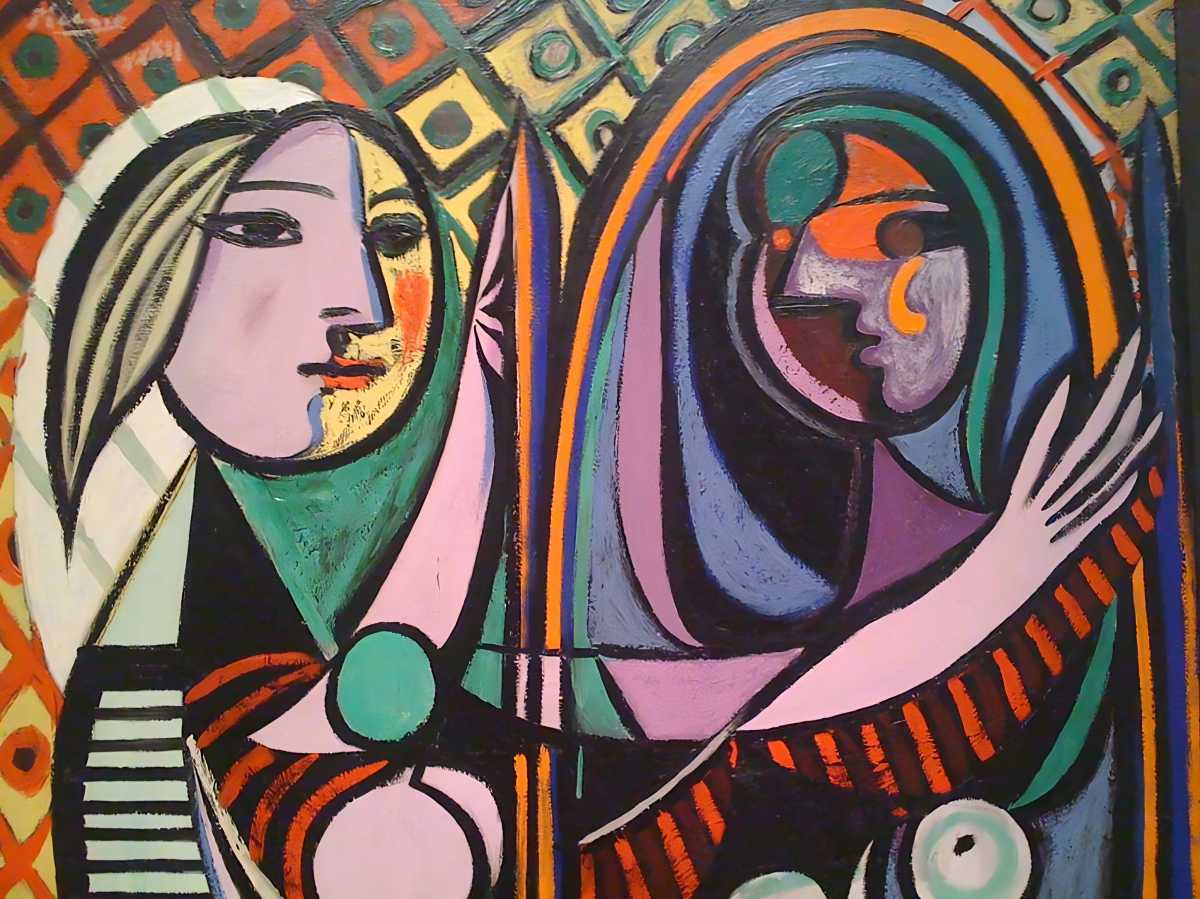Pablo Picasso, an indomitable titan of 20th-century art, left an indelible mark on the world with his innovative approach and prodigious output.
His life and work were characterized by an unrelenting quest for new forms of expression, which led him to become the father of Cubism and one of the most versatile artists of all time. However, Picasso’s genius was not without its shadows.
His tumultuous relationships, particularly with women, and the controversies that surrounded him have added a complex layer to his enduring legacy as a blue-chip artist.
The genius of innovation
Picasso’s journey as an artist began in Málaga, Spain, where he was born in 1881. His early works, influenced by his father and the classical training he received, showcased his prodigious talent.
However, it was in Paris, the pulsating heart of the art world, that Picasso truly came into his own. His Blue Period (1901-1904) and Rose Period (1904-1906) reflected deep emotional resonance and a mastery of color and form, but it was his leap into Cubism that cemented his place in art history.
Cubism, developed alongside Georges Braque, shattered the conventions of perspective that had dominated Western art since the Renaissance. By deconstructing objects into geometric shapes and presenting multiple viewpoints simultaneously, Picasso challenged viewers to see the world through a radically new lens.
Works like “Les Demoiselles d’Avignon” (1907) not only revolutionized visual art but also laid the groundwork for much of modern art’s subsequent developments.
The controversial figure

Picasso’s life was as multifaceted as his art. He was a man of contrasts, known for his generosity and charm, yet also for his egocentrism and tumultuous personal relationships. His interactions with women were particularly contentious. Picasso had numerous muses and lovers, many of whom suffered under the weight of his domineering personality.
One of his most famous muses was Dora Maar, a brilliant photographer and painter in her own right. Their relationship was intense and often fraught with conflict, reflecting the broader themes of domination and creativity that marked Picasso’s interactions with women. Françoise Gilot, another of his lovers, detailed in her memoir “Life with Picasso” the complexities of being involved with such a mercurial figure.
Picasso’s relationships were marked by a pattern of idealization followed by devaluation, a cycle that left lasting scars on those involved.
Women as muses and subjects
Despite the controversy, women played an essential role in Picasso’s creative process. His depictions of women are among his most celebrated works, encompassing a range of styles and emotions. From the tender, melancholic portraits of his early periods to the fragmented, abstract forms of his Cubist works, Picasso’s portrayal of women was as varied as it was profound.
These women were not merely passive subjects but active participants in his artistic evolution. Their presence in his life and work underscored the complex interplay between personal relationships and creative output.
While his treatment of women has been criticized, it is undeniable that their influence was integral to his artistic journey.
The blue-chip legacy
Today, Picasso’s legacy is untouchable. He remains a blue-chip artist, whose works command staggering prices at auction and are coveted by collectors and museums worldwide. His influence extends beyond the art market; Picasso’s innovative spirit continues to inspire contemporary artists, making him a perennial figure in the cultural consciousness.
The market value of Picasso’s works is a testament to his lasting impact. His paintings, drawings, and sculptures are considered sound investments, reflecting not only their aesthetic value but also their historical significance. This blue-chip status ensures that Picasso’s legacy will endure, continually attracting new generations of admirers and scholars.
Pablo Picasso was a complex genius whose contributions to art are unparalleled. His relentless pursuit of innovation reshaped the art world, and his controversial personal life adds a layer of intrigue to his story. The women in his life were both muses and victims, their influence etched into his work in ways that continue to be studied and debated.
As a blue-chip artist, Picasso’s legacy is secure, his works serving as both artistic masterpieces and cultural artifacts. Through the lens of controversy and creativity, Picasso’s life and art remind us of the intricate dance between genius and imperfection.
Currently on view at DTR Modern Gallery Soho, Boston, and Washington DC. Visit dtrmodern.com for further information.
***
Art Talk: Honoring Legacy at the 30th Annual Caron New York Gala
It is gala season— and who knew it could be so inspiring and healing.
The 30th Annual Caron New York Gala, an unforgettable evening of celebration and dedication, honored remarkable individuals who have profoundly impacted their fields and supported the mission of Recovery for Life.
Jill Jordan, founder of The Neil Lasher Music Fund, received the Richard J. Caron Award of Excellence for her transformative work in providing treatment to over 35 individuals in the music community since 2021. Her career as a managing partner at a leading investment advisory firm and her extensive board service underscore her unwavering commitment to helping others.
Juliana Terian, CEO of Rallye Motor Co., was recognized for her leadership and advocacy for women in the automotive industry. Her contributions to the Caron New York Advisory Board and her role in creating Rallye’s eco-friendly BMW campus highlight her dedication to innovation and community service.
The Thomas J. Moran Caron Music Award was presented to Kristen and Stephen Stills for their philanthropic efforts in autism awareness. Kristen, an Emmy-winning producer, and Stephen, an iconic musician, have used their platforms to promote understanding and support for the autistic community through Autism Speaks Light Up the Blues concerts.
The evening was a powerful reminder of the impact of compassion and dedication. To support Caron’s mission of Recovery for Life, consider donating, volunteering, or raising awareness about their transformative programs. Your contribution can make a difference in the lives of those struggling with addiction and seeking recovery.
For more information on how to give back, visit caron.org.
Read More: https://www.amny.com/entertainment/arts-entertainment/






























